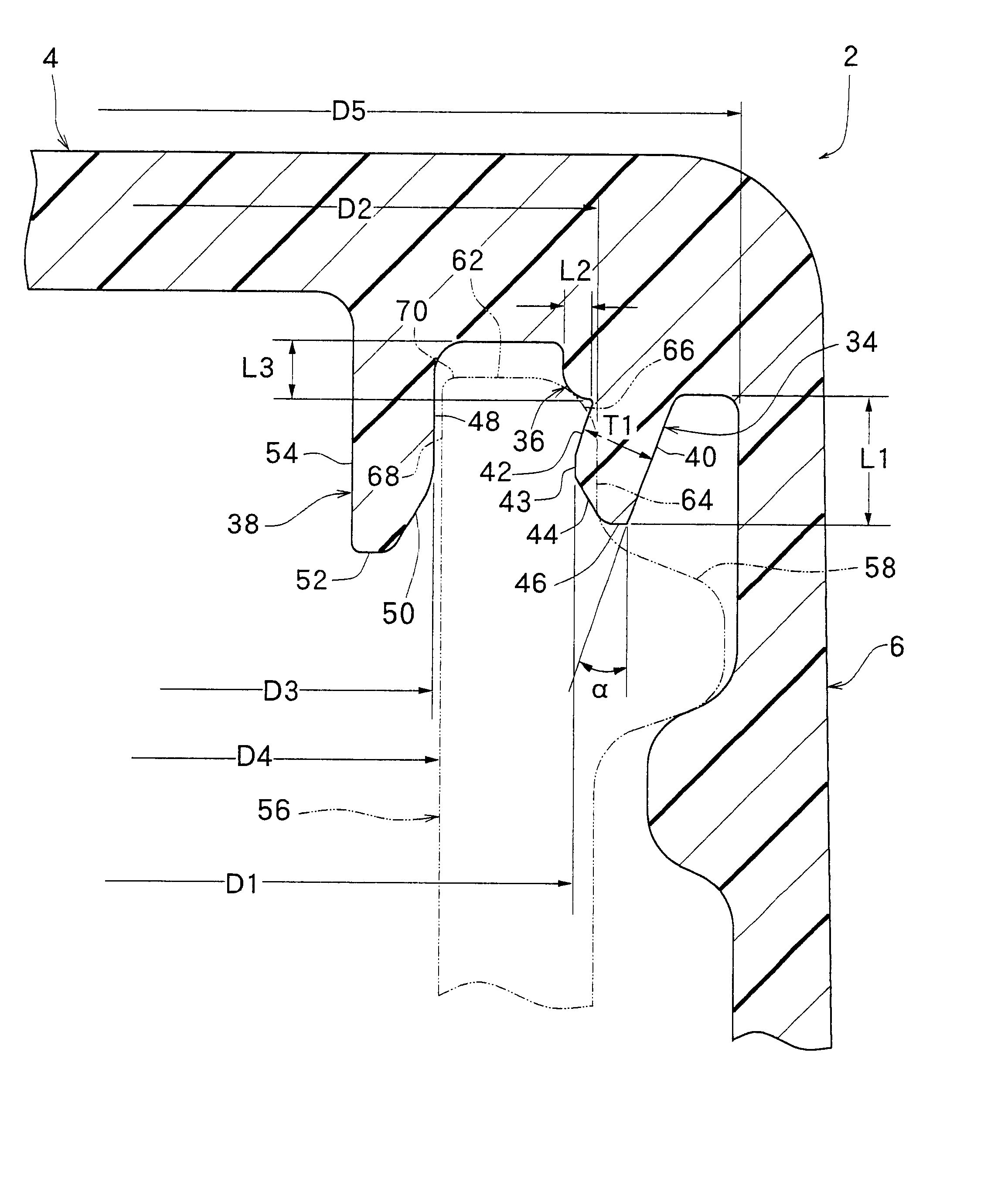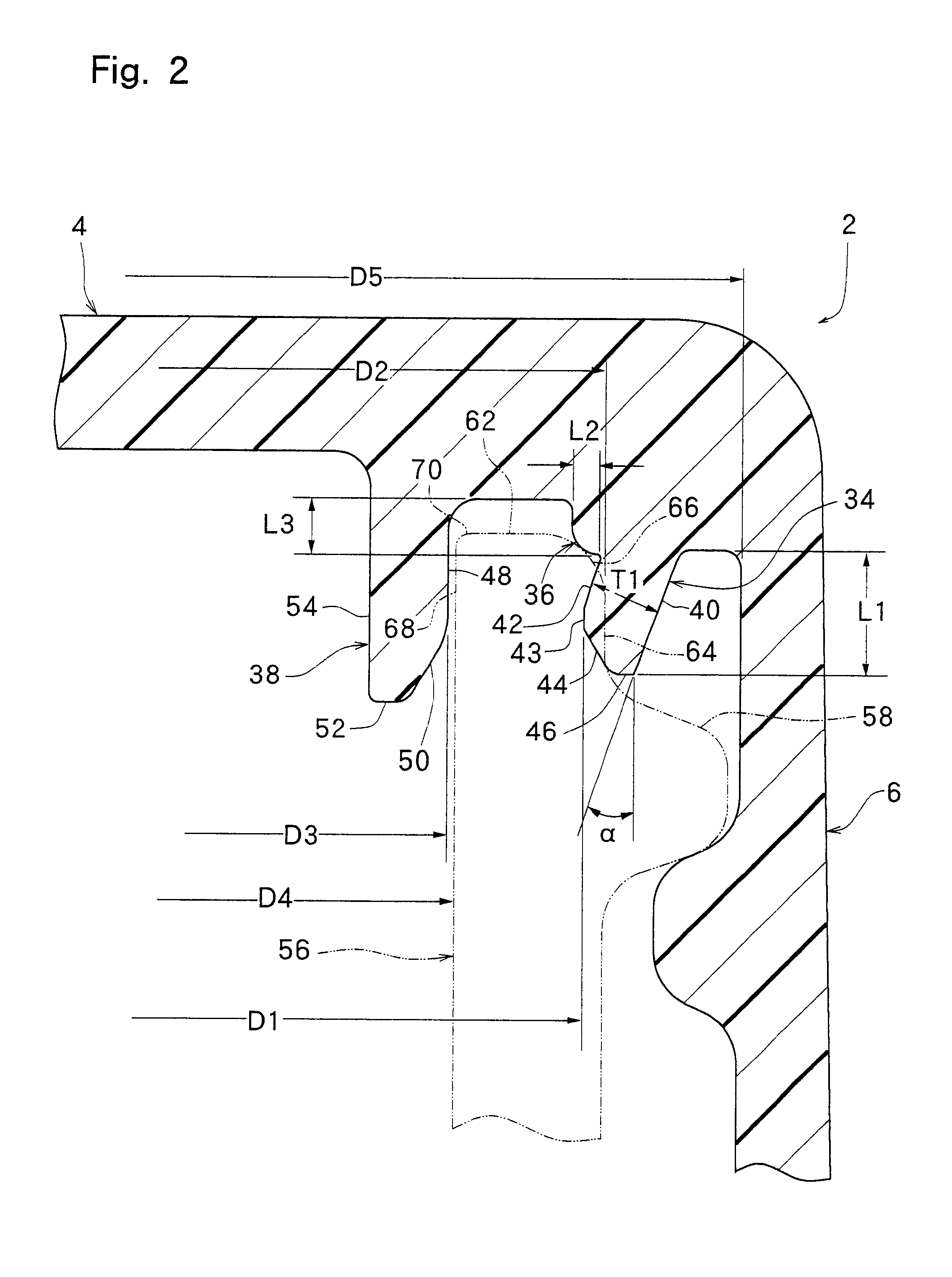Plastic container closure
a container and plastic technology, applied in the field of plastic container closures, can solve the problems of leakage of gas pressure inside the container, deformation of the annular seal piece, and increase of the manufacturing cost of the container closur
- Summary
- Abstract
- Description
- Claims
- Application Information
AI Technical Summary
Benefits of technology
Problems solved by technology
Method used
Image
Examples
example 2
There were produced 30 of the same container closures as in Example 1, except that the shape of the container closure was as shown in FIG. 4, and
The above container closure was subjected to the same stacking load resistance test as in Example 1. The results are shown in Table 1.
example 3
There were produced 30 of the same container closures as in Example 1, except that the shape of the container closure was as shown in FIG. 5, and
The above container closure was subjected to the same stacking load resistance test as in Example 1. The results are shown in Table 1.
example 4
There were produced 30 of the same container closures as in Example 1, except that the shape of the container closure was as shown in FIGS. 6 and 7, and
The above container closure was subjected to the same stacking load resistance test as in Example 1. The results are shown in Table 1.
PUM
 Login to View More
Login to View More Abstract
Description
Claims
Application Information
 Login to View More
Login to View More - R&D
- Intellectual Property
- Life Sciences
- Materials
- Tech Scout
- Unparalleled Data Quality
- Higher Quality Content
- 60% Fewer Hallucinations
Browse by: Latest US Patents, China's latest patents, Technical Efficacy Thesaurus, Application Domain, Technology Topic, Popular Technical Reports.
© 2025 PatSnap. All rights reserved.Legal|Privacy policy|Modern Slavery Act Transparency Statement|Sitemap|About US| Contact US: help@patsnap.com



